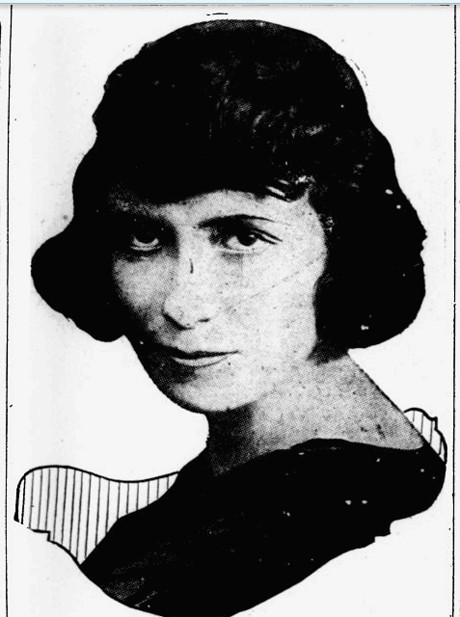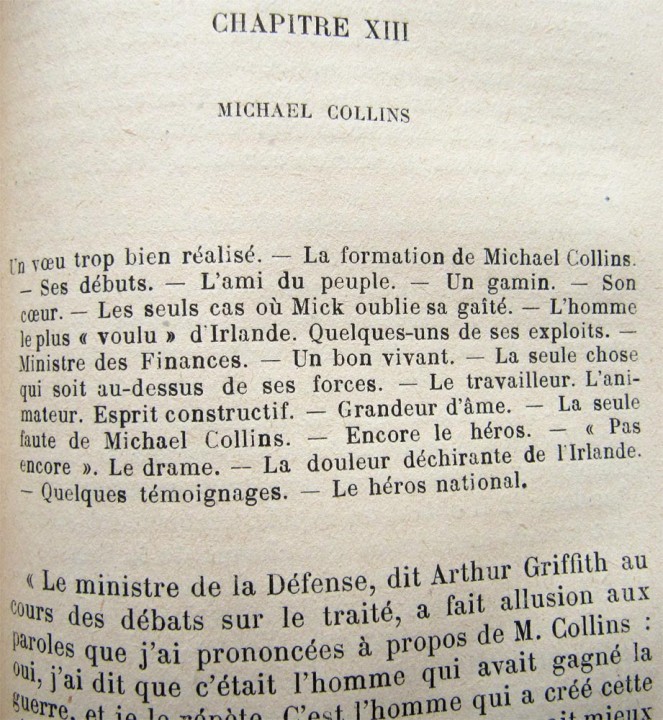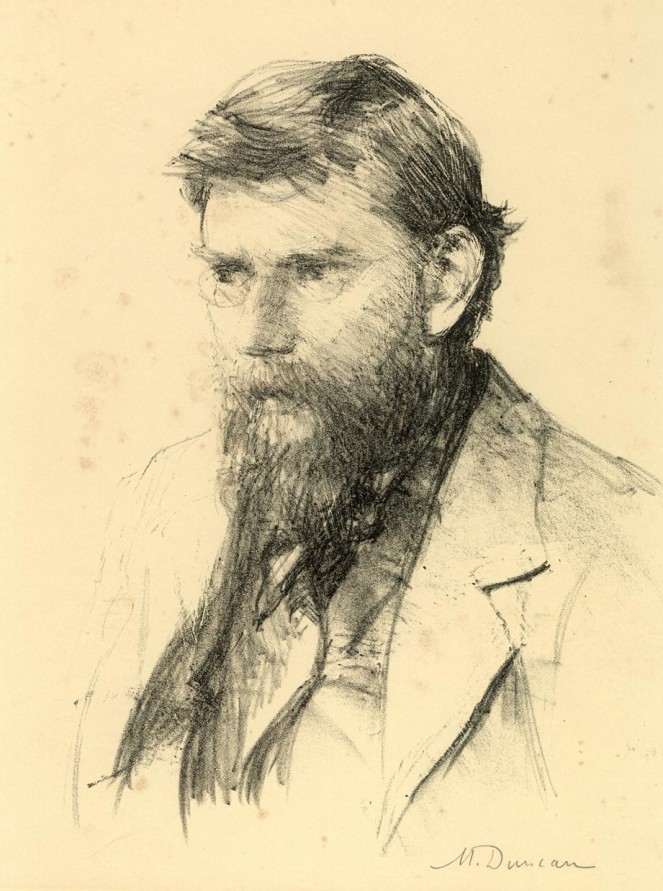by Oliver O'Hanlon, PhD student, University College Cork
Simone Téry travelled to Ireland at a seminal moment in the birth of modern Ireland. My research involves analysing newspaper articles written by French journalists who visited Ireland during the twentieth century, to see how Ireland was being reported in the French press at this time. This is the story of how I was able to trace the trajectory of one French journalist who visited Ireland on many occasions during the 1920s with the help of sources in the National Library of Ireland (NLI).

Simone Téry (1897-1967)
During the early part of the twentieth century, an army of foreign correspondents descended on the island of Ireland. They came to see for themselves the realities of the conflicts that were tearing the country apart, the Irish War of Independence and later the Irish Civil War. In many ways, Ireland was seen as a test case for countries that yearned for independence from the British Empire. If Ireland could manage to break free, this would provide hope for others who longed to be able to manage their own affairs. One of the journalists who came to Ireland at this time was Simone Téry (1897-1967). The daughter of two established journalists, Téry arrived in August 1921 to report for a French newspaper on how the truce in the Irish War of Independence was holding up. Writing for the left-leaning daily newspaper L’Oeuvre, Téry travelled the length and breadth of the island to gauge the mood of the people.
From the very first moment that she set foot in Ireland, Téry set about contacting the key personalities in Irish political life. She secured interviews with the main Sinn Féin and Unionist politicians in Dublin and Belfast. Photographs accompany her front page articles on Éamon de Valera, Arthur Griffith and Michael Collins. The article on Collins appears in L’Oeuvre around the time of the Anglo-Irish Treaty negotiations. Téry is reputed to have been the only journalist, French or otherwise, to have ever interviewed Collins. In the article, she jokes that Collins avoids journalists almost as much as he avoids the police. Téry relates to her readers back in France some of the many rumours surrounding Collins and the methods he used to escape from his pursuers. For instance, she mentions that he may have dressed as a nun to evade capture. This rumour has since been substantiated through contemporary British Intelligence documents.

Chapter XIII of Simone Téry's En Irlande. NLI ref. Ir 9410912 t 1
During a journalism career that spanned five decades, Simone Téry strove to get as close to her subject as practicable, in order to give her readers as authentic a picture as possible. In September 1921, she travelled from Dublin City to Co. Clare in the company of the IRA commander for Co. Clare, Michael Brennan. She’s told that offers such as this are not normally made to journalists. Téry seems to have fallen under a spell cast by the young army man. She likens the twenty-five year old to a ‘young God of war’, saying that he brings to mind Generals of the French Revolution, men such as Marceau and Hoche. En route to Co. Clare, she witnessed the devastation caused by several years of conflict. They pass through a desolate landscape. Roads are blocked by tree trunks, bridges are blown up and burned out houses litter the land. Even though she was warned in advance, Téry writes that she is shocked by these scenes of destruction and says that it reminds her of the aftermath of the First World War in France.

AE or George Russell by Mary Duncan. NLI ref. 3052 TX
Simone Téry wrote two books on Ireland. They were published by the reputable French publishing house, Flammarion. Her book on Irish politics, En Irlande, De la guerre d’indépendance à la guerre civile (1923) [In Ireland, from the War of Independence to the Civil War], is a collection of the newspaper articles she wrote from Ireland. It sketches out chronologically how Ireland achieved independence from Britain. She dedicated her second book, which focused on Irish cultural and artistic life, L’île des bardes (1925) [The Island of Bards], to her good friend George Russell (AE). They met in the early 1920s and kept up regular correspondence until AE’s death in 1935. The book contains a series of chapters based on interviews she conducted with the avant-garde of Ireland’s cultural scene, including W.B. Yeats, AE, J.M. Synge, James Stephens, George Moore and James Joyce.
Letters held in the NLI indicate that Téry wanted to include playwright Sean O’Casey in this pantheon of up and coming literary stars. Firstly, AE wrote to O’Casey to introduce his young French friend to him (See below, NLI Ms. 27,026). AE concludes his letter with the request: “Please be nice to her”. Téry then sent O’Casey a letter asking for an appointment to interview him when she visits London (NLI Ms. 27,656 (1.1)). She begins by flattering him saying that he was the new light who had helped to ‘blaze up’ the flagging Abbey stage. She goes on to say: “if you will kindly give me an appointment at whatever time suits you, I’ll be grateful to you for ever. And don’t think I’ll look at you as at an animal in the zoo, I’ll tell you stories about Chinese funerals (as I just came from China)”. It seems that the proposed meeting never took place, because O’Casey does not feature in Téry’s book. What a shame, I’m sure it would have been a very interesting conversation about Chinese funeral rites.

Letter from AE to Sean O'Casey introducing Simone Téry. NLI ref. Ms. 27,026
Téry’s friendship with AE proved to be an important source of inspiration for both of them. He joked that she was his muse, having been the inspiration for his poem ‘In a Strange City’. For a couple of years in the mid 1920s, Téry served as the Paris correspondent for the journal edited by AE, The Irish Statesman. She was also on good terms with others associated with the journal, including Mary Colum, Frank O’Connor and P.L. Travers. AE and Téry seem to have been kindred spirits in many ways. In a letter to a young student he met while on a lecture tour in America, AE says of Téry: “she is an enchanting French girl who was in Ireland for some months, four years ago, a world roamer. I get letters from her from Paris, Italy, Algiers, Suez, Saigon, Japan, China, Honolulu, all within six months, and when I was in New York our paths crossed for a day. She was going back to Paris from China and I was just beginning my American trip. We were so delighted at meeting in that big strange city that we took a motor car and drove round the park for four hours, holding each others hands” from p. 181 of AE, Letters from AE, ed. by Alan Denson (London: Abelard-Schuman, 1961).

Simone Téry's dedication of L'Ile des Bardes to AE. NLI ref. Ir 8209 t 1
The title for this blog post was inspired by a newspaper article written about Téry. An American journalist who worked alongside her in Ireland said: “she was the human question mark, she was ever present, this bright-eyed miss who felt herself so much at home in Ireland”. Téry was always to be found at the centre of the action, according to her American colleague. As we now approach a much publicised period of commemorating / remembering in Irish history, Simone Téry’s reportage remains an invaluable source of information for anyone interested in this crucial time in the birth of modern Ireland.
